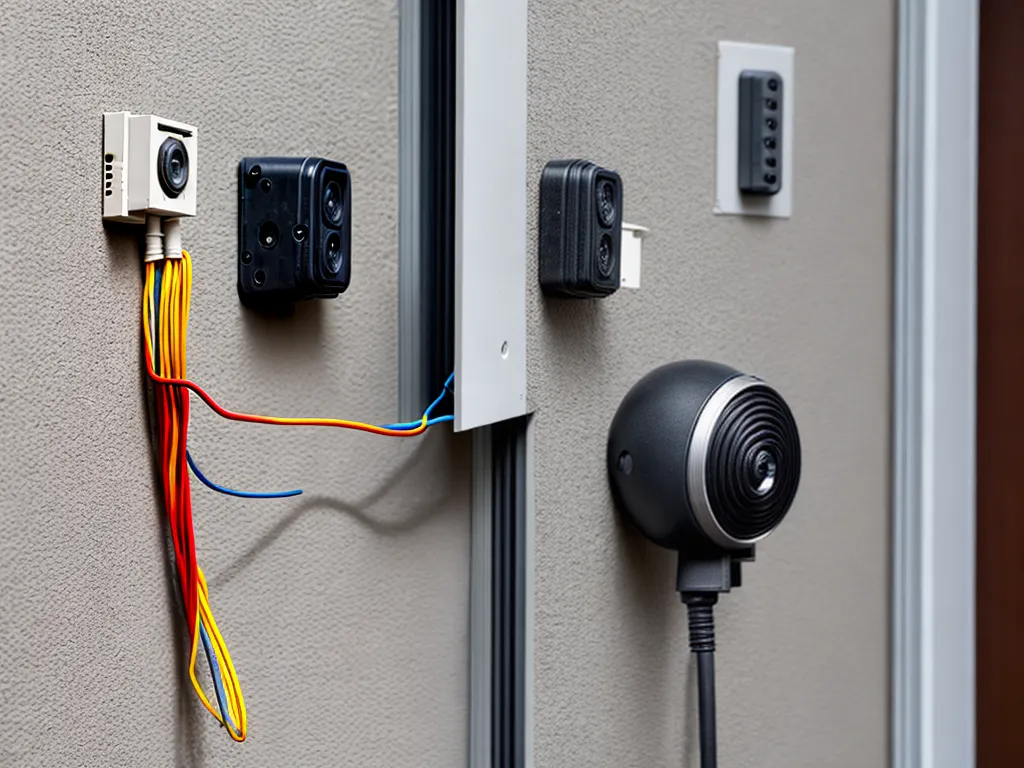
How to Create Hidden Wiring For Your Home Security System
Installing hidden wiring for your home security system can provide an extra layer of protection and discreetness. Here is a step-by-step guide on how to create hidden wiring yourself:
Planning Your Hidden Wiring
Before starting any work, you'll want to plan out where you need wiring and how you'll route it.
Determine Camera, Sensor, and Device Locations
Walk around your home and make note of where you want to place security cameras, motion sensors, control panels, and other devices. Consider how to discreetly route wires to each location.
Map Out Wiring Paths
Draw a rough floor plan and map out wiring paths from the devices to the location of your security system control panel. Walk the paths to look for obstacles. Plan to run wires through walls, floors, and ceilings.
Choose Wire Types
You'll need coaxial cable for security cameras, and low-voltage 2 or 3-wire cables for sensors. Use plenum-rated cables for running wires through ducts. Purchase extra length for easier pulling.
Gather Tools and Materials
For cutting and routing, you'll need a drywall saw, drill, wire strippers, fish tape, wall anchors, and clips. Make sure you have enough cable, junction boxes, outlets, and connectors.
Routing and Installing Hidden Wire
With your plan ready, it's time to install the hidden wiring. Take precautions to avoid electrical shocks or damage.
Running Wire Through Walls
Cut access holes between wall studs near your device locations. Drill entry and exit holes. Use fish tape to pull cables through the cavity. Staple cables to studs and patch drywall.
Running Wire Under Flooring
Locate floor joists and drill access holes. Lift flooring materials if needed. Lay plenum-rated cables under subfloors or above finished floors. Pull wires and secure with clips.
Running Wire Through Ceilings
Cut access holes between ceiling joist bays. Drill entry and exit holes. From the attic, thread cables down into walls. Pull wires and secure with clips or staples.
Connecting and Mounting Devices
Install junction and outlet boxes. Use cable connectors or terminal blocks to connect wiring. Securely mount cameras, control panels, and sensors. Test connections before patching holes.
Finishing the Installation
Take final steps to complete a professional hidden wiring installation.
Patching Holes and Surfaces
Fill any holes and gaps around wires with plaster or caulk. Repair drywall, baseboards, flooring, and other surfaces to hide evidence of installation.
Organizing and Labeling Cables
Neatly bundle and label excess wire lengths in the attic or basement. This makes it easier to test and troubleshoot your system.
Testing Connections
Power up your security system to confirm cameras and sensors work properly. Check live views and system logs to verify solid connectivity.
Documenting the Installation
Keep a copy of your wiring plan showing device locations and cabling paths. This will make upgrades or repairs much simpler down the road.
With good planning and safe installation methods, you can discreetly run security system wiring through your home. Taking your time will lead to a hidden wiring job you can be proud of.